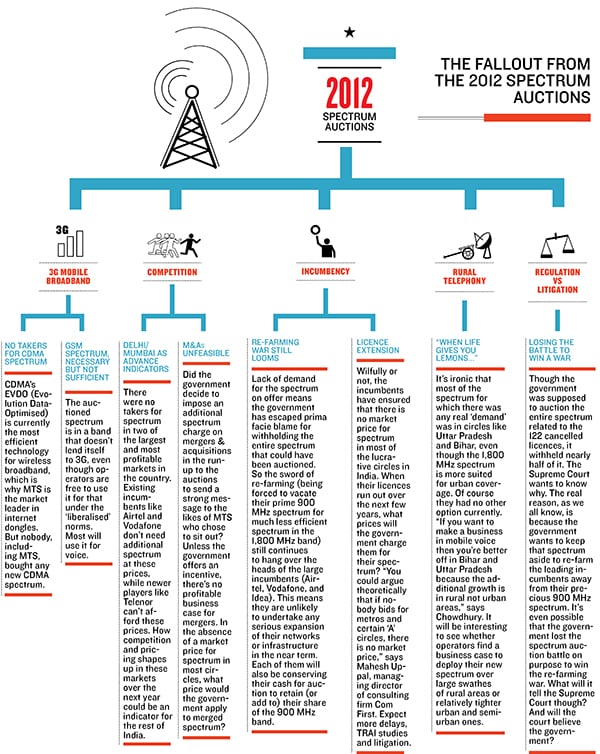What the Recent Spectrum Auctions Suggest
The recently concluded spectrum auctions were a stone in the Indian telecom lake. Its ripples will be felt for a while


“The auctions were a success!” says Mohammad Chowdhury, the head of PwC’s India Telecoms practice.
Is he referring to the same auctions I just witnessed? The ones where there were literally zero takers for CDMA spectrum, meaning it had to be called off and on the GSM side the total bids amounted to just over Rs 9,400 crore, much less than even the combined base price of Rs 15,000 crore?
“Sorry Mohammad, did you just say they were a success?” I ask him.
“Sure. We know the auction mechanics worked well because they revealed the real demand for spectrum. That had become very important for the sector. Given all the bad news that has plagued telecom in the last one year, I’d say these auctions were a breath of fresh air,” he says.I
Chowdhury is right. Most of us have been mistakenly assuming that a ‘successful’ auction is one where the government makes boatloads of money beyond their estimates, and a ‘failed’ one is where bidders aren’t willing to pay even the base price.
But that’s a one-sided viewpoint. Because the job of an auction is to reveal the true price for the product being sold by matching supply and demand and additionally in the case of spectrum auctions, ensure that scarce resources are assigned to the bidder who is likely to value and use them in the most efficient manner.
And that’s exactly what happened. Operators didn’t fall over each other to buy spectrum because it was too expensive, too restrictive and too little. The most lucrative circles and data-traffic markets in the country—Delhi, Mumbai and Karnataka—did not see even a single bid because it is almost impossible for a new player to break the stranglehold of existing incumbents.
Conversely, the circles where there was some semblance of action—UP and Bihar—are rural and still driven by voice telephony.
First Published: Dec 04, 2012, 06:42
Subscribe Now